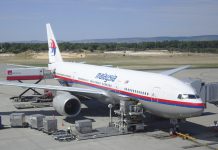Look at any modern regional jetliner, and chances are the engines are mounted on the rear fuselage. Accepted today as the norm in small jet aircraft design, this look was fairly radical at the dawn of the Jet Age when large turbine-powered airliners had their engines buried in the wing root, or mounted in sleek pods hanging from underwing pylons.

While the British de Havilland Comet (1952) and Soviet Tupolev Tu-104 (1955) had their engines housed next to the fuselage, Boeing in the U. S. capitalized on captured German aerodynamic data after World War II and married the 35-degree swept wing with sleek jet engine nacelles mounted underneath. First seen on the Air Force’s six-engine B-47 Stratojet, this configuration was used to create the groundbreaking Boeing 707.
In 1955, a French manufacturer devised an innovative solution to the powerplant location problem by attaching engine nacelles directly to the aft fuselage. Distinct advantages were ease of maintenance and accessibility to the engine, and remarkably low noise levels inside the cabin. Additionally, the wing itself was left aerodynamically “clean” and free of any structures to disrupt critical airflow.
The airliner that brought this novel configuration to the world was the Sud SE. 210 Caravelle, named after small two-masted sailing ships used in the 1600s. Carrying 80 passengers at a cruising speed of 520 mph, the Caravelle was powered by two Rolls-Royce Avon engines, and flown by a two-man crew. Its famous sleek nose section looked quite similar to the British Comet because it was literally the same structure purchased from de Havilland.
In the photo above, we can see two other unique features of the Caravelle. Passengers are boarding the aircraft via rear airstairs that retract up into the fuselage, and once seated, they will view the world below through triangular-shaped cabin windows. SAS, or Scandinavian Airlines Systems as it was then known, became the inaugural Caravelle operator on April 26, 1959, followed by national carrier Air France which began service ten days later.
Caravelles served smaller airports not well suited for the new big jets entering service, achieving their peak efficiency on stage lengths of between 500 and 1,000 miles. SAS placed Caravelles on many of their well-established inter-European routes, as did Swissair, SABENA, and Finnair. Elsewhere around the world, Air Algerie, Thai Airways, and Varig first used Caravelles in Africa, Asia, and South America, while United Air Lines flew them in the U.S.
This photo also serves as a beautiful example of the “staged” airline promo ad, as these passengers are all hired models, as are the flight attendant and baggage handlers taking the cart underneath the aft fuselage. The red-carpeted ramp is actually located in Toulouse, France, site of the original Sud manufacturing facility in the 1950s, and home of Airbus today.























